Browse Primary Sources
Locate primary sources, including images, objects, media, and texts. Annotations by scholars contextualize sources.
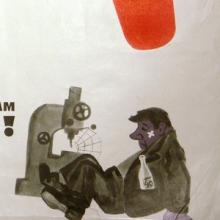
Shame to the loafer and the drunkard
Before the era of the Gorbachev reforms, social and health problems could not be easily discussed in the Soviet Union. The emphasis for public health was on keeping people healthy so that they could work better and more productively. Alcoholism, for example, was not a health problem, but instead a poor excuse for failing to work productively.
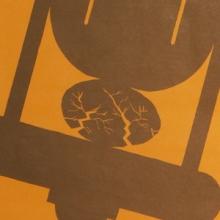
Drug Abuse is Suicide
One of Mikhail Gorbachev's most famous reform movements was glasnost' (openness), which allowed partial freedom of the press to address social problems and corruption within the Soviet Union. Among the issues raised during the glasnost' era of the Soviet Union were public health concerns, which became a prominent issue by the late 1980s.

Let's Go! Support Perestroika!
Mikhail Gorbachev began a parallel program of reform for the Soviet Union: perestroika (reconstruction) and glasnost' (openness). His intention, however, was for a state-directed movement that would keep the Communist Party in firm control. In this poster from 1989, it is clear that the people of the Soviet Union had adopted the cause of reform for themselves.
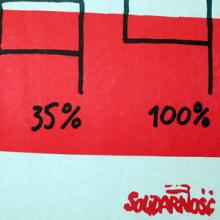
Polish Voting Rights
This campaign poster for the Polish Solidarity movement shows Polish voters what was at stake in the upcoming elections in June 1989. Under the terms of the arrangement negotiated with the Communist party, 35% of the seats in the Lower House of the parliament (Sejm) were to be freely contested.
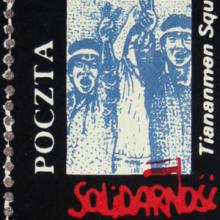
Solidarity Commemorates Tiananmen Square
After Solidarity assumed the political leadership of Poland, the new government issued these stamps to commemorate the student protests in Tiananmen Square in China in the Spring of 1989. Postage stamps may be part of everyday life and the images here served an important political purpose.
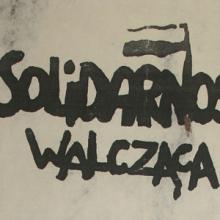
Meeting Poster for Solidarity Rally
This electoral poster invites readers to attend a meeting on May 1, 1989 to discuss the upcoming election. A tentative translation of the poster is: "Solidarity's Struggle.
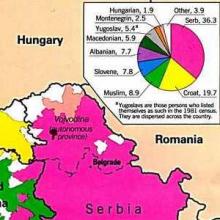
Ethnic Groups in Yugoslavia
In 1990, the Yugoslav Communist Party divided into several separate parties, one for each of the six Yugoslav Republics. Tensions among the ethnic groups of Yugoslavia, divided among the republics, led to an outbreak of a civil war by 1991. This map demonstrates the complexity of the Yugoslav situation, as few of the republics were populated by just one ethnic group.
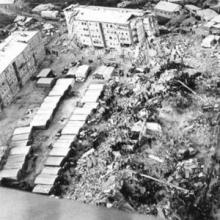
Disaster in Armenia, 1988
On December 7, 1988, an earthquake with a 6.9 magnitude struck the Soviet Republic of Armenia. With powerful aftershocks continuing for months following, Armenia struggled to recover. By United Nations' estimates, more than 25,000 people were killed, 15,000 more injured, and the physical damage equaled $14.2 billion (U.S.).
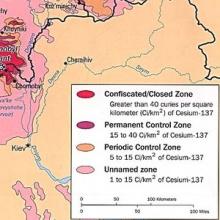
Radiation Contamination after the Chernobyl Disaster
On April 26, 1986, an explosion at the Chernobyl Nuclear Power Plant in Ukraine led to the radioactive contamination of the surrounding countryside and to radioactive fallout throughout Eastern and Western Europe.
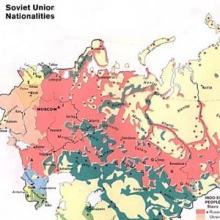
Soviet Map, 1982
This map provides one representation of the national composition of the Soviet Union in the early 1980s. As the distribution of colors indicates, each of the major ethnic groups occupied specific regions of the country. Although the different ethnicities were concentrated in specific regions, it is also clear that the entire country was multinational.
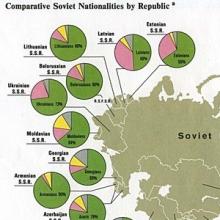
Soviet Nationalities Map, 1989
This map offers a different representation of the same information as in Document 1. In this case, the population distribution of each Soviet republic is depicted in the pie charts and in the accompanying table.
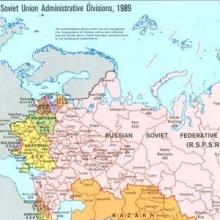
Soviet Administrative Map, 1989
This map describes the administrative structure of the Soviet Union. The fifteen Soviet federative socialist republic provided one division along national lines, yet this map also demonstrates how each region was further divided into territorial units. In some cases, these lines were based on ethnic divisions.

Tear Down this Wall
On June 12, 1987, President Ronald Reagan delivered a major speech on the Cold War with the Brandenburg Gate and the Berlin Wall as a back drop. In staging this speech, President Reagan hoped to draw a parallel with the historic speech delivered in Berlin by President John F. Kennedy in July 1963.
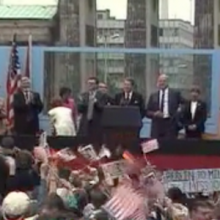
Reagan at the Brandenburg Gate
On June 12, 1987, President Ronald Reagan delivered a major speech on the Cold War with the Brandenburg Gate and the Berlin Wall as a back drop. Since the end of World War II, Berlin had been one of the main symbols of the Cold War. In staging this speech, President Reagan hoped to draw a parallel with the historic speech delivered in Berlin by President John F. Kennedy in July 1963.
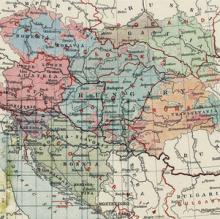
Map of Distribution of Languages of Austria-Hungary after World War I
The original map came from the Perry-Castañeda Library Map Collection at the University of Texas at Austin. Timişoara (Temesvar in Hungarian) in Western Romania was long under Habsburg rule. Like much of Austria-Hungary, the city has been ethnically and religiously diverse. The Banat’s political ties to Romania date only to 1918.

Ballad of the Striking Miners: Ballada Strajkujacych Gornikow!
The image here is a picture taken of one of the circulated copies of the "Ballad of the Striking Workers." Referenced in Padraic Kenney's scholarly interview segment "Does This Poem Explain the Strike?," this ballad (and many others like it) were used effectively by Solidarity in its campaign to popularize its anti-governmental activities as well as communicate its ideas to the broader public.
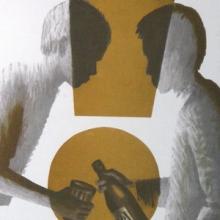
Young Alcoholics in the Soviet Union
Before the era of the Gorbachev reforms, social and health problems could not be easily discussed in the Soviet Union. The emphasis for public health was on keeping people healthy so that they could work better and more productively.
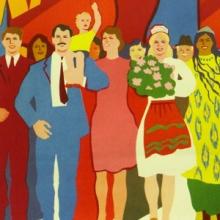
Celebrating Soviet Achievements in the 1980s
Soviet authorities valued posters as a most accessible form of propaganda with origins in the early days of the Communist Revolution as a way of reaching out to an illiterate audience. Throughout Soviet history, posters remained a visible indication of the Party's official interests.
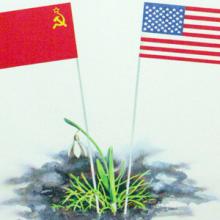
US-Soviet Summit in Washington, DC
In December 1987, President Ronald Reagan and Mikhail Gorbachev signed the Intermediate-Range Nuclear Forces Treaty (INF) in Washington, DC. The treaty eliminated both nuclear and conventional ground-launched ballistic missiles with a range of 300-3,400 miles. This was a major achievement in terms of reducing the military build-up in each of these Cold War superpowers.

Spy Radio from East Germany
These images depict a small transistor radio of the type a resident of Berlin might own during the 1960s or 1970s. What is not apparent when the radio is closed is that it is actually a communications device used by agents of the East German state police, the Stasi, who crossed into (or lived in) West Berlin to communicate with their officers across the Berlin Wall in East Berlin.